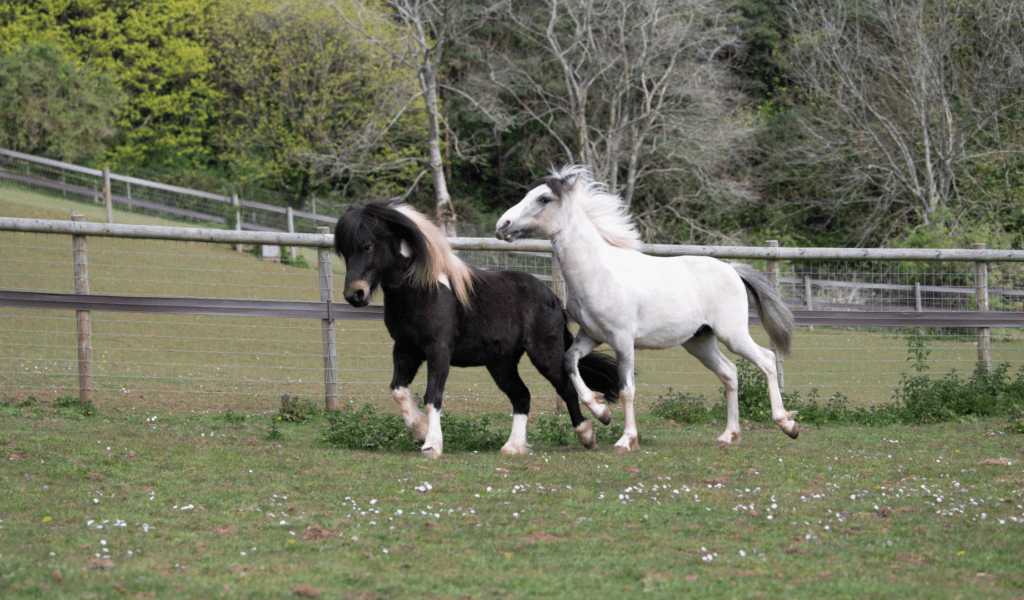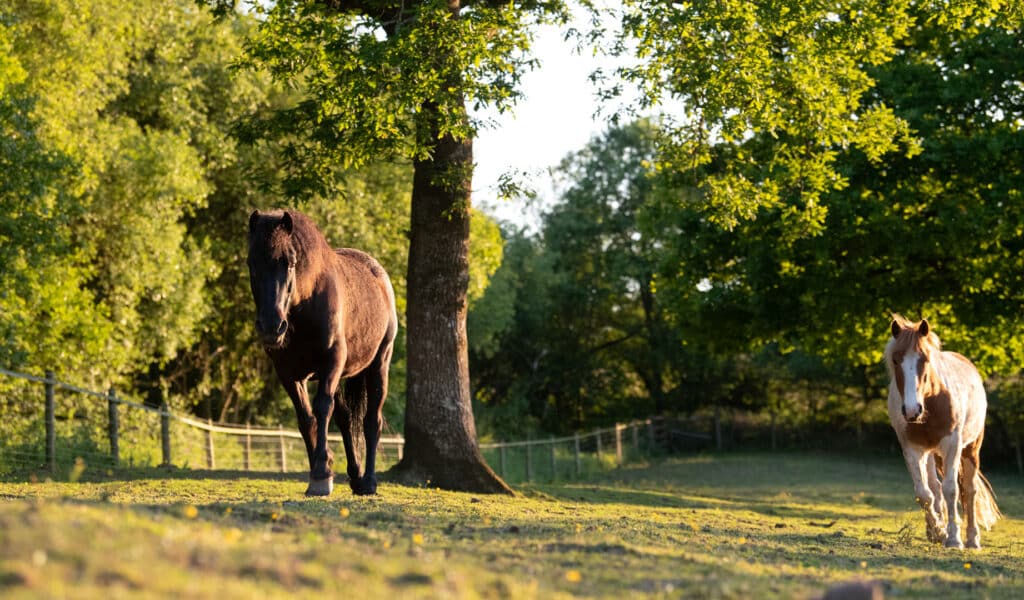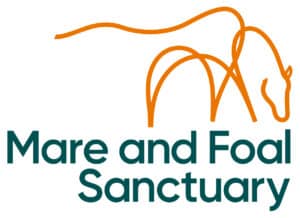Introducing new horses
It is important to plan when introducing new horses to each other. Ideally, it should be done slowly and in a way that does not cause them, or the horses in existing herds, any unnecessary stress.
You also need to ensure people are kept as safe as possible. We would always recommend having sturdy footwear and a riding hat conforming to current British Safety Standards when attempting to introduce horses to each other.
Choosing a herd for your horse
Consider the sex, size, age, temperament and management needs of the new horse and identify the most suitable herd for them to join. When possible, take into consideration any responses to previous introductions to other horses. Horses most commonly choose companions of a similar size, age and colour to themselves.
Assess the proposed herd fully, paying particular attention to clinical history of individual herd members and potential health risks they may have from excitable behaviour in the field. For example, those with a history of laminitis should avoid the increased impact on their feet from excessive trotting, cantering or galloping.

Getting your horses ready to meet
If horses are being put into a new field which they haven’t been in before, they should, wherever possible, be allowed some time in that field without any other horses. This will allow them to familiarise themselves with the layout, positioning of resources and areas they may be able to escape to.
When sufficient time is available, scent swapping should be used before any physical interaction between horses. This can be done by allowing a new horse and existing herd members to investigate the smell of each other’s droppings – either in a field or in stables. Ideally this should be done for a week, longer if any big reactions are seen.
Horses who are to be turned out together should be housed next to or opposite each other before being turned out. Where new horses are introduced to each other for the first time in stables or crew barns, a quiet area should be chosen with minimal distractions. Horses from the existing herd will ideally be housed in a stable opposite or next to the new horse. How you arrange this should depend on how reactive the new horse appears. Allow time for the horses to interact while being observed. Other horses from the existing herd can be added to the immediate area if this goes as planned and can then be housed directly next to the new horse over time so that all horses have had some interaction before being turned out together.
Where possible, horses who are going to be introduced as field companions should spend some time together in-hand. This can be done in an arena or yard. Start with the horses at a distance from each other and gradually walk nearer and nearer until eventually they are walking side by side. These horses can be rewarded by their handler for all positive behaviour so that they have positive experiences in the presence of the other horse. If there are any signs of aggression or anxiety between the horses, they should be kept at a further distance. The horses can then continue to walk at that distance until their behaviour becomes more relaxed and positive.

Managing the first meeting
If horses are being introduced for the first time in a field, they should already have been grazed in adjacent fields. Horses who are most likely to be reactive should be added first, with calmer horses being added later. This should ideally be done over the course of a few days rather than adding all horses on the same day. Before letting them go, position horses away from any tight corners, troughs or other hazards. Field-safe headcollars should be left on during this time to aid catching them more easily if needed.
If resources are limited, such as during winter, multiple small piles of hay should be positioned around the field with several horses’ lengths between them. There should be at least two piles per horse, preferably more, to prevent resource guarding.
When leading unfamiliar horses to their new field, horses should be led individually.
Once the horses have been safely released both handlers should exit the field and observe the horses from outside, watching for unwanted or unsafe behaviours.
Downloadable Information
Download a printable copy of this page to keep or share.
Downloadable VersionOur Work at The Mare and Foal Sanctuary
Advice and Resources
Lifelong Sanctuary
Rehoming



